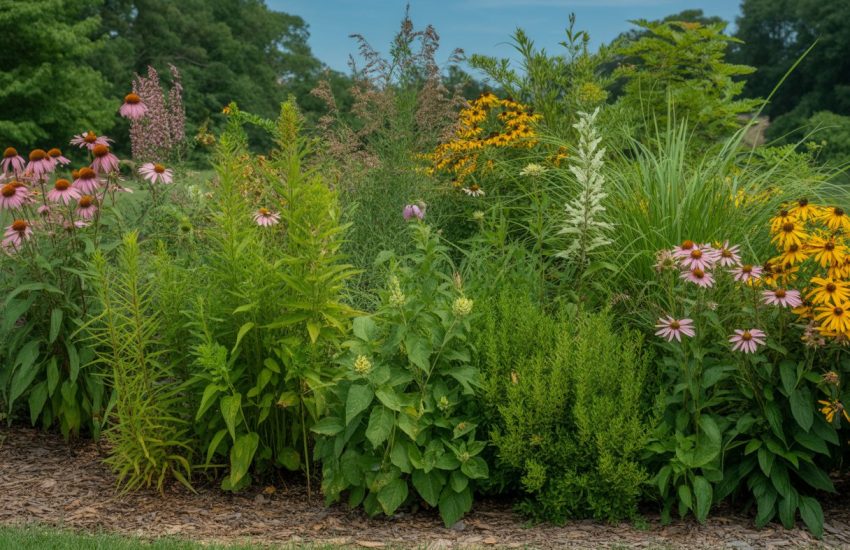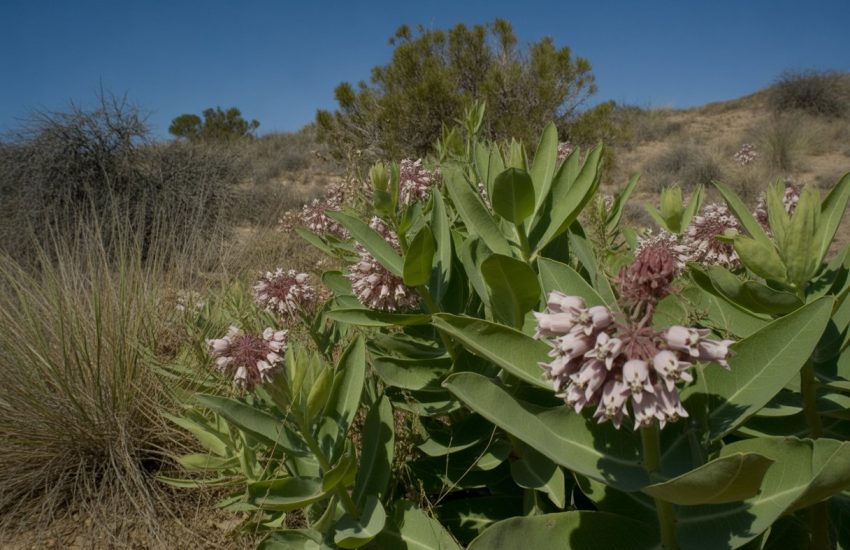Native Plants of Utah for Landscaping
Utah is a land of diverse landscapes and ecosystems. With that in mind, it’s no surprise that many beautiful native plants can be used for landscaping. We will discuss some of the best native plants for Utah gardens and landscapes and provide tips on properly caring for these plants. So, if you’re looking to add a touch of natural beauty to your home or business, consider using some of Utah’s unique native plants!
Larkspur
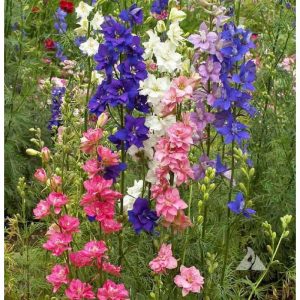
The delphinium, also known as the larkspur, is a flowering plant in the buttercup family. The name “delphinium” comes from the Greek word for dolphin due to the shape of the flower. Delphiniums are native to Europe and Asia and have been introduced to North America and Australia. The plants grow best in cool climates with plenty of moisture. They are also popular garden plants, and they come in various colors, including blue, pink, purple, and white. The flowers typically bloom in late spring or early summer. Delphiniums are poisonous to humans and animals if ingested, so care should be taken when growing them around children and pets.
How to take care:
- Delphiniums need full sun to bloom well. If you live in an area with hot summers, choose a spot that receives morning sun and afternoon shade.
- Delphiniums prefer rich, well-drained soil. Amend your soil with compost or other organic matter before planting.
- Water your delphiniums profoundly and regularly during the growing season. Mulch around the plants to help retain moisture.
- Feed your delphiniums monthly with a balanced fertilizer. Stop fertilizing in late summer to allow the plants to harden off before winter.
- Delphiniums are susceptible to several pests and diseases. Watch for aphids, slugs, and powdery mildew. Treat problems promptly with the appropriate pesticide or fungicide.
- Divide your delphiniums every few years to keep them healthy and vigorous. Divide plants in early spring or fall.
How to grow:
- Choose a sunny spot: Delphiniums prefer full sun, but they will also tolerate partial shade.
- Prepare the soil: Delphiniums like rich, well-drained soil. Amend the soil with compost or other organic matter before planting.
- Sow the seeds: Delphinium seeds are relatively large, so they are best sown directly in the garden bed where they grow. Sow the seeds in late spring or early summer.
- Transplant seedlings: If you start your delphiniums from seed, transplant them into individual pots when they are large enough to handle. Transplant them into the garden in late spring or early summer.
- Support the plants: Delphiniums can get quite tall, so they may need to be staked. Place stakes in the ground before planting and tie the plants to the stakes as they grow.
Penstemon
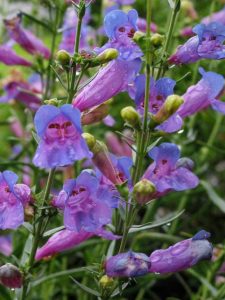
The Penstemon is a species of flowering plant that is native to the western United States. It is a member of the plant family Plantaginaceae, which includes several other well-known plants such as the snapdragon, foxglove, and speedwell. The Penstemon is a perennial plant, meaning it will live for more than two years. It typically blooms in the spring and summer months, and its flowers range in color from blue to purple. The Penstemon is a famous garden due to its drought tolerance and attractively shaped flowers. In addition, the Penstemon is a good nectar source for bees and other pollinators.
How to take care:
- Water regularly. The Penstemon needs to be kept moist, so water it whenever the top inch of soil feels dry.
- Fertilize monthly. Use a balanced fertilizer and apply it according to the package directions.
- Prune annually. Cut back the plant in late winter or early spring before new growth appears.
- Protect from pests. Keep an eye out for aphids, spider mites, and whiteflies. If you see any problems, treat them immediately with an approved insecticide.
How to grow:
- Choose a location that receives full sun or partial shade. The Penstemon will do best in well-drained soil.
- Prepare the soil by loosening it with a spade or tiller. Work organic matter into the ground to help improve drainage.
- Dig a hole twice as wide as the plant’s root ball. Gently set the plant in the spot and backfill with soil. Firm the soil around the plant to remove any air pockets.
- Water deeply immediately after planting, and keep the soil moist until the plant is established. Once established, the Penstemon is relatively drought tolerant.
- To encourage blooming, apply a balanced fertilizer according to package directions starting in early spring. Continue fertilizing throughout the growing season.
Sphaeralcea
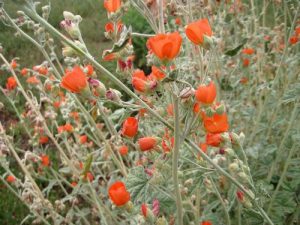
The Sphaeralcea is a genus of flowering plants in Malvaceae’s mallow family. The name is derived from the Greek words “Shapira,” meaning “sphere,” and “alkē,” meaning “hollyhock.” The genus includes annual and perennial herbs, shrubs, and subshrubs native to arid and semi-arid regions of the Americas, from the southwestern United States to Chile. The leaves are usually profoundly palmately lobed or divided, with hairy surfaces. The flowers are borne in clusters or solitary in the axils of the leaves. They have five petals which may be pink, orange, or yellow. The fruit is a schizocarp consisting of five one-seeded sections. Gardening enthusiasts value the Sphaeralcea for its showy flowers and easy culture. It is a perfect choice for hot, dry locations where other plants may struggle to thrive. The Sphaeralcea can provide a splash of color to any garden with proper care.
How to care:
- Water regularly. The Sphaeralcea prefers well-drained soil and should be watered deeply but only when the soil is dry. Overwatering can lead to root rot, so be sure to allow the soil to dry out completely between waterings.
- Plant in full sun. The Sphaeralcea needs at least six hours of sunlight each day to bloom properly. If possible, choose a location in your garden that receives full sun all day.
- Fertilize monthly during the growing season.
How to grow:
- Choose a planting location that receives full sun. The Sphaeralcea is a sun-loving plant that will not flower as profusely if it does not have enough sunlight.
- Prepare the soil before planting by adding organic matter such as compost or manure. This will help the plant to grow healthy roots.
- Plant the Sphaeralcea in early spring, as soon as the ground can be worked. Space the plants about 18 inches apart.
Phlox divaricata
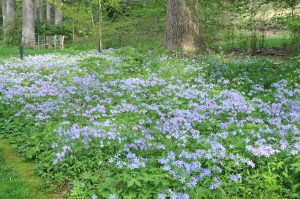
The Phlox divaricata, also known as the wild sweet william, is a herbaceous perennial native to North America. The plant has several stems covered in dark green leaves, producing small clusters of white or blue flowers. The Phlox divaricate is a low-maintenance plant often used in gardens and landscaping. The Phlox divaricata can spread rapidly through rhizomes, so it is essential to control its growth if planted in a garden bed. The plant can be propagated by seed, division, or cuttings.
How to care:
- Water regularly. The Phlox divaricata prefers moist soil, so be sure to water it regularly, especially during dry periods.
- Fertilize monthly. Like all plants, the Phlox divaricata benefits from a regular fertilization schedule. A good rule of thumb is to fertilize with a balanced fertilizer once a month.
- Provide adequate drainage. Good drainage is essential for the health of the Phlox divaricata. Be sure to plant it in an area that has well-drained soil.
- Mulch the plant. Mulching helps retain moisture and protect the plant’s roots from extreme temperatures. Apply a layer of mulch around the base of the plant in late fall or early winter.
- Prune as needed. After the plant blooms, cut the stem back by about half its length. This will encourage new growth and help to keep the plant compact.
How to grow:
- Choose a location that receives partial shade and has moist, well-drained soil.
- Prepare the soil by loosening it with a spade or tiller. If necessary, add organic matter to improve drainage.
- Dig a hole slightly larger than the plant’s root ball. Gently remove the plant from its pot and place it in the hole.
- Fill in around the plant with soil and gently pack it down. Water thoroughly.
- Mulch around the plant to help retain moisture and control weeds.
Lupinus argenteus
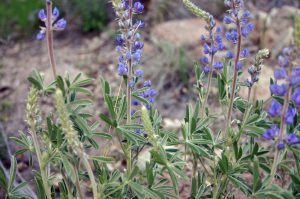
The Lupinus argenteus, also known as the silver lupine, is a species of flowering plant in the legume family. The silver lupine is native to the western United States and Canada, often found in open areas such as meadows and hillsides. The plant grows to two to three feet and has long silver-colored leaves. The silver lupine is a popular choice for gardeners and landscapers due to its attractive appearance and ability to tolerate poor soil conditions. The plant is also known for attracting pollinators such as bees and butterflies. In addition, silver lupine is a food source for several animals, including deer, rabbits, and rodents.
How to care:
- The silver lupine prefers full sun but can also tolerate partial shade.
- Water the plant regularly, ensuring the soil is evenly moist but not soggy.
- Fertilize monthly using a balanced fertilizer formulated for flowers.
- Deadhead spent flowers to encourage further blooming.
- Pruning is not necessary but may be done if desired.
The silver lupine is susceptible to powdery mildew and rust, which can be treated with a fungicide. With proper care, your silver lupine will thrive and provide you with beautiful blooms for many seasons.
How to grow:
- Choose a sunny spot in your garden for the silver lupine. This plant loves full sun and will not do well in shady areas.
- The soil should be well-drained and rich in organic matter. Add compost or manure to the planting area before planting the silver lupine.
- Plant the seeds in early spring, as soon as the ground can be worked. Sow the seeds about 1/2 inch deep and thin out the seedlings when they emerge.
- Water the silver lupine regularly, especially during hot, dry weather. Mulch around the plants to help retain moisture in the soil.
- Fertilize monthly with a balanced fertilizer such as 10-10-10. Apply the fertilizer evenly around the plants, avoiding contact with the leaves.
Gaillardia pinnatifada
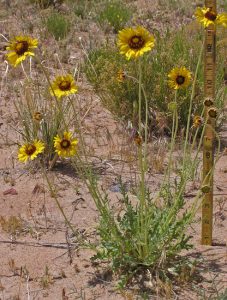
The Gaillardia pinnatifida, more commonly known as the blanket flower, is a wildflower species native to North America. The plant gets its name from its large flower heads resembling blankets or quilts. The Gaillardia pinnatifada is a popular choice for gardens and landscaping due to its showy flowers and ease of care.
In addition, Gaillardia pinnatifada is susceptible to several pests, including aphids, thrips, and whiteflies. These pests can damage the plant and make it more challenging to grow. However, with proper care, Gaillardia pinnatifada can be a beautiful addition to any garden.
How to care:
- It will bloom from early summer to fall with proper care. Gardeners looking for a colorful addition to their landscape should consider the Gaillardia pinnatifid.
- It prefers full sun and well-drained soil. If growing Gaillardia pinnatifada in pots, use a light potting mix.
- Water profoundly but infrequently, letting the soil dry out between waterings.
- Fertilize monthly with a balanced fertilizer.
- Deadhead spent flowers regularly to encourage continued blooming.
- It is prone to rust disease, so watch for signs of infection and remove affected leaves immediately.
How to grow:
- Add organic matter to the soil to help retain moisture.
- Plant the seeds in spring or early summer, spacing them about 12 inches apart.
- Water the seeds generously after planting and keep the soil moist until they germinate.
- Once the plants are established, they will need very little water.
- Deadhead the flowers regularly to encourage continued blooming.
Aspen Daisy
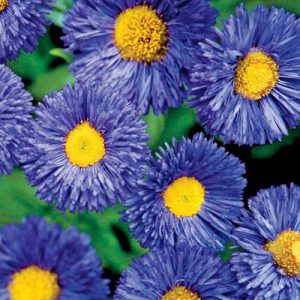
Aspen Daisy is a beautiful flowering plant that is native to North America. These daisies are relatively easy to grow and tolerant of various soil types and climates. Aspens prefer full sun but will also do well in partial shade. They are perfect for gardens of all sizes, and their delicate white flowers add a touch of elegance to any landscape. Aspens are also low-maintenance plants, requiring little attention once they are established. However, they do need to be watered regularly during the hot summer months. With care, Aspen Daisies will reward you with years of beautiful bloom.
How to grow:
- The Aspen Daisy should be planted in well-drained soil in an area that receives full sun. The plant is drought-tolerant and does not require a lot of water. Once established, the Aspen Daisy will only need to be watered every few weeks.
- The plant should be fertilized in the spring with a balanced fertilizer once a year. Overfertilizing can damage the plant.
- The Aspen Daisy does not require pruning, but if you deadhead the spent flowers, it will encourage new growth.
- The Aspen Daisy is generally resistant to pests and diseases. However, if you notice any problems with your plant, it is best to consult with a Gardener or Horticulturist.
Clarkia unguiculata
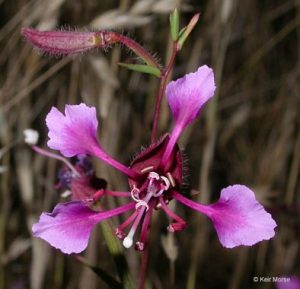
The Clarkia unguiculata is a beautiful and unique flower native to Utah. Also known as the farewell-to-spring or mountain garland, this flower blooms in various colors, including pink, purple, and white. The Clarkia unguiculata is a popular garden choice due to its drought tolerance and low maintenance needs. This flower attracts bees and hummingbirds and is also an excellent cut flower. The Clarkia unguiculata is a versatile plant in both formal and informal gardens. With its striking blooms and long flowering season, the Clarkia unguiculata is an excellent addition to any garden.
How to grow:
- Choose a sunny spot in your garden. The Clarkia unguiculata prefers full sun and will not do well in shady areas.
- Prepare your soil. Loosen the dirt and remove any rocks or debris before planting.
- Plant your seeds. Sow the seeds ½ inch deep in rows 18 inches apart—water well after planting.
- Keep an eye on watering. The Clarkia unguiculata does not like wet feet, so be sure to water only when the soil is dry to the touch.
- Fertilize sparingly. This plant does not need a lot of fertilizer; once every two weeks should suffice.
How to care:
- Plant in well-drained soil in a location that receives full sun.
- Water regularly during the growing season, but do not allow the soil to become soggy.
- Fertilize monthly with a balanced fertilizer.
- Deadhead spent flowers to encourage continued blooming.
- Cut back the plants after flowering to promote bushy growth.
With just a little care, your Clarkia unguiculata will provide months of beautiful blooms.
Aspen goldthread
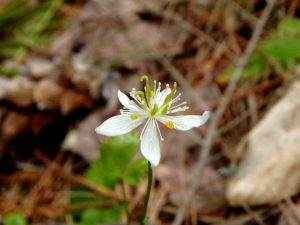
Aspen goldthread is a species of flowering plant in the Berberidaceae family. The plant gets its common name from the golden color of its thread-like leaves. Aspen goldthread is a herbaceous perennial that typically grows to between 10 and 20 centimeters in height. The plant has small, yellow flowers that bloom in early summer. Aspen goldthread is commonly used as an ornamental plant in gardens and shrubs. It is also used in traditional medicine to treat various ailments, including colds and stomach problems.
How to care:
- Aspen goldthread prefers full sun to partial shade, which will do best in soil rich in organic matter.
- To propagate aspen goldthread, divide the root ball in spring or fall.
- This plant is tolerant of drought, but it will need extra water during extended periods of dry weather.
- Aspen goldthread does not require much fertilizer, but you can apply a balanced fertilizer in spring if desired.
- Pruning is not necessary, but you can trim back the plant after flowering if desired.
How to grow:
- Choose a location that receives full sun to partial shade. Goldthread will do best in moist, well-drained soil.
- Amend the soil with organic matter before planting. This will help the roots to establish themselves more easily.
- Space plants 18-24 inches apart. They will spread over time to form a low-maintenance ground cover.
Buckwheats
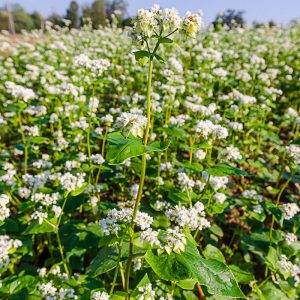 SKU 1004
SKU 1004
Buckwheats are a species of flowering plant in the Buckwheat family. The name “buckwheat” is used for several different species, including Fagopyrum esculentum (common buckwheat), Fagopyrum tataricum (Tartarian buckwheat), and Sobolifera chinesis. Buckwheats are annual plants with triangular seeds and white, pink, or red flowers. The flowers are produced in dense clusters and are often used in dried arrangements. The seeds are ground into flour used in pancakes, porridge, and noodle dishes. Buckwheats are also used as a cover crop or green manure. They fix nitrogen in the soil, improve drainage, and reduce erosion. Buckwheats are fast-growing and easy to grow, making them a popular choice for gardeners and farmers.
How to care and grow:
- Buckwheats prefers full sun but will tolerate some shade.
- They should be planted in moist, well-drained soil.
- Buckwheats can be propagated by seed, division, or cuttings.
- Seeds should be sown in early spring or fall.
- Plants should be spaced 10-12 inches apart.
- Buckwheats do not need to be fertilized but may benefit from the occasional application of compost or manure.
- Water regularly, especially during dry spells.
- In colder climates, plants may need mulched to protect them from frost damage.
- Buckwheats can be harvested for grain or flour when the heads turn brown and begin to shed their seeds.
Globemallows
Globemallows (Sphaeralcea spp.) is a type of flowering plant that is native to North America. They are part of the mallow family, which includes hollyhocks and cotton plants. Globemallows can be annual or perennial and come in various colors, including pink, orange, red, and yellow. The flowers are typically 2-3 inches in diameter and have five petals. Globemallows are often used as ornamentals in gardens and landscapes. They are relatively easy to grow and can tolerate various soil and climatic conditions. However, they may be susceptible to powdery mildew and other diseases if they are not given enough water or if the leaves stay wet for extended periods. With proper care, globemallows can add color and beauty to any garden or landscape.
How to grow:
- When planting, choose a location that receives full sun. Globemallows will not flower as well in shaded areas.
- The soil should be well-drained and relatively sandy. If the soil is too heavy or clay-like, it will retain too much moisture, and the roots may rot. Adding some organic matter to the ground can help to improve drainage.
- Water regularly during the growing season, but do not overdo it. Too much water can cause the flowers to wilt and the plants to become stunted. Once established, globemallows are relatively drought-tolerant.
- Globemallows are not heavy feeders, but they will benefit from a light fertilizer application in early spring. A slow-release fertilizer or compost will work well.
- Globemallows are usually trouble-free, but they can sometimes be affected by powdery mildew or aphids. Watch for these problems.
Pinyon Pine
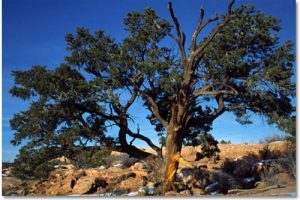
Pinyon pine is a species of pine tree that is native to the southwestern United States. The tree is small to medium-sized, with a short, stocky trunk and dense, dark green foliage. The pinyon pine is an important food source for many animals, including deer, squirrels, and birds. The tree’s cones are also used in traditional Native American ceremonies. Gardeners in the southwestern United States often plant pinyon pines as ornamental trees. However, the trees can be challenging to care for and are susceptible to pests and diseases.
How to care:
- Pinyon pine trees are hardy evergreens that are well-suited to various landscaping applications. Though they are relatively low-maintenance, pinyon pines require some primary care to thrive. Here are some tips for keeping your pinyon pine healthy and looking its best.
- Pinyon pines should be planted in well-drained soil in an area that receives full sun. Once established, they are drought-tolerant and will tolerate a wide range of soil types. However, they will not take wet or soggy conditions. Pinyon pines should be watered deeply and infrequently, only when the top few inches of soil are dry to the touch.
- Pruning is not typically necessary, but if you need to trim your pinyon pine, it is best to do so in late winter or early spring before new growth begins. To encourage dense growth, you can remove up to one-third of the longest branches yearly. Pinyon pines are susceptible to various pests and diseases, but these can usually be controlled with routine applications of pesticides and fungicides.
Utah Holly
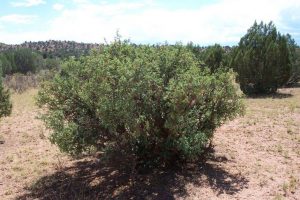
The Utah holly is a native plant of the western United States commonly used in landscaping and gardening. The Utah holly is an evergreen shrub that can grow to be six feet tall and wide. The leaves of the Utah holly are dark green and have a spiny texture. The flowers of the Utah holly are small and white, and they bloom in the springtime. The fruit of the Utah holly is a red berry that birds eat. The Utah holly is tolerant of drought and cold temperatures, making it an ideal plant for gardening in harsh conditions. The Utah holly can also be pruned into a hedge or topiary.
To care for Utah holly, water regularly during the first growing season to establish a deep root system. Once established, the plant is quite a drought tolerant. Fertilize in early spring with a slow-release fertilizer formulated for evergreens. Prune Utah holly to shape as needed after flowering in late spring or early summer.
Bluebell
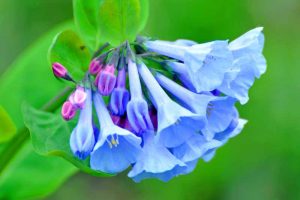
The bluebell is a wildflower species native to the western United States. The bluebell is a small plant that only grows to be about six inches tall. The leaves of the bluebell are green and lance-shaped, and the flowers are bell-shaped and blue. The blooming period for bluebells is typically from April to May. Bluebells are often found growing in woodlands, meadows, and hillsides. They are also a popular choice for planting in gardens and landscaping.
To care for bluebells, plant them in a location that receives full sun to partial shade. The soil should be rich and well-drained. Bluebells prefer cool weather and will go dormant in the summer heat. Water regularly during the first growing season to establish a deep root system. Once established, bluebells are pretty drought tolerant. Fertilize in early spring with a slow-release fertilizer formulated for wildflowers or bulbs. Deadhead spent flowers to encourage continued blooming.
Many different types of native plants can be used for landscaping in Utah. Each plant has its own unique set of characteristics and requirements for care. With this list, you can find the perfect native plants to create a beautiful, low-maintenance landscape that will thrive in Utah’s harsh conditions.

